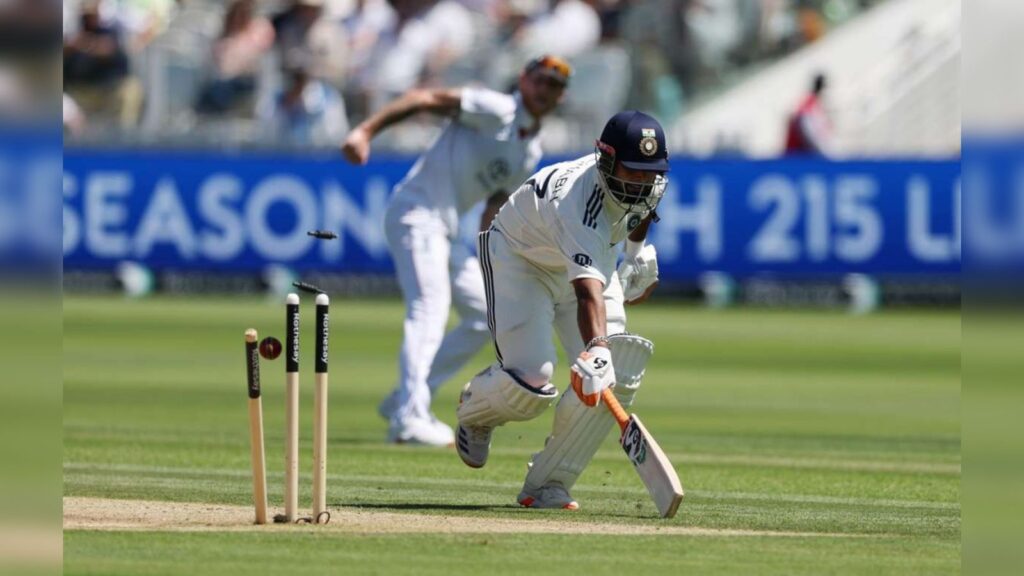
Greg Chappell, and other sages of the game, have often spoken of the need to seize the moments, and win key sessions, in order to win Tests. It’s a skill that this relatively young India team has yet to learn. Had they kept their composure at crucial times, the series scoreline might have been 3-0. Instead, England are 2-1 up with two to play. Here, we look at the sliding doors that India couldn’t push through at Lord’s.
Ben Stokes: Leading the victory charge
Stokes stamped his authority over all five days, steering England to a remarkable 22-run win. He returned from hamstring surgery leaner and sharper, and the Lord’s numbers say it all: 77 vital runs, five incisive wickets and the momentum-shifting run-out of Rishabh Pant in the first innings. That threw India off a platform from which they might have built a commanding lead and left them to chase a tricky 193 on Day 5.
The ball-change gambit that misfired
India’s call to change the fairly new ball on Day 2 raised eyebrows. They hoped the replacement Dukes would reward Jasprit Bumrah’s early spell, but instead, the new nut softened quickly, offering little help and arguably weakening their grip on the match. England seized the advantage, and added a vital 116 for the final three wickets.
The Pant Run-Out: Are India still landmark-obsessed?
Pant’s dismissal for 74 just before lunch on Day 3 wasn’t only costly, it was catastrophic. He and KL Rahul had forged a 141-run stand and India were in complete control when the left-hand batter decided to risk a single. Rahul was on 98, with the clock ticking to the interval, and Pant picked out Stokes, who seldom misses anything in a crunch situation. Shubman Gill said later that it was merely an error of judgment and not further evidence of an enduring obsession with milestones. Somehow, it didn’t seem that way.
Extras: The silent killers
England’s 192 in the second dig had 32 extras – India conceded 63 across the match. Some stemmed from bowlers being unused to the Lord’s slope, while others were the result of erratic bowling and dodgy keeping. Given the margin of defeat, such indiscipline will haunt India for a while.
Jaiswal’s tries for Bollywood, goes bust
In a tricky chase, it was imperative that India blunt the new ball as much as possible. Instead, Yashasvi Jaiswal played the most outrageous and ill-advised of pulls off Jofra Archer. The two played together at Rajasthan Royals in the IPL, and the stroke would have looked out of place even in that tournament. Jaiswal has loads of talent, but at this level, he needs to learn to pick his moments.
Bumrah must play at Old Trafford
Bumrah did what he could with the ball, and then offered sterling resistance with the bat. With an eight-day gap now before the fourth Test, Bumrah must surely play in Manchester. That India won without him at Edgbaston means nothing. With the series over if England win at Old Trafford, India have no choice but to pick their only world-class player.
Three All-Rounders instead of Kuldeep?
Between them, Ravindra Jadeja, Washington Sundar and Nitish Kumar Reddy have taken 11 wickets. Jadeja’s haul of only three suggests he is being played primarily as a batter, and he has justified that with a return of 327 runs. Washington and Nitish have 122 runs from seven completed innings. Stokes alone has 163 runs and 11 wickets. The numbers just don’t stack up when it comes to the continued exclusion of Kuldeep Yadav, whose variations would surely be too much for England’s wagging tail.
Did India go into survival mode too early?
India batted 57.1 overs on the final day, for 112 runs. The run rate was less than 2, and at no point were questions asked of the England bowlers. They could bowl to their plans with no disruption. Pant may have given Stokes food for thought, but he departed after striking two fours. Rahul was in his shell, and none of the others – even those capable of launching the ball huge distances – took on the bowlers in any way. It’s hard enough to bat 90 overs in a day to save a Test. It’s even tougher when you barely play a shot in anger.



